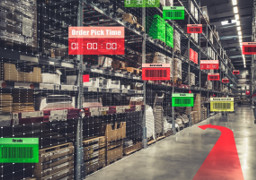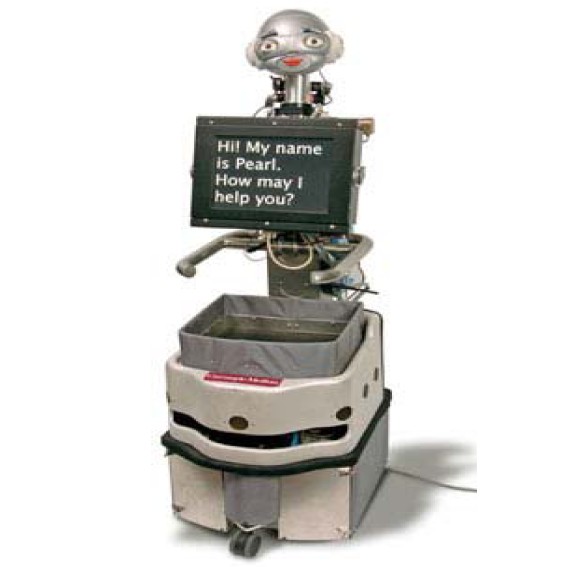|
 |
лҜёкөӯмқҳ мқёкіөм§ҖлҠҘ кё°л°ҳ вҖҳмһ¬мӮ°м—…нҷ”вҖҷ |
|
| л¶ҒлҜё м§Җм—ӯм—җ мһ¬мӮ°м—…нҷ”мқҳ мӢңк°„мқҙ мҳӨкі мһҲлӢӨ. к·ёлҹ¬лӮҳ мқҙкІғмқҖ 1970л…„лҢҖ м ңмЎ°м—…мқҳ лҸ„лһҳмҷҖлҠ” л§Һмқҙ лӢӨлҘҙлӢӨ. мқёкіөм§ҖлҠҘ л•Ңл¬ёмқҙлӢӨ. лҜёкөӯ лӮҙ лҰ¬мҮјм–ҙл§Ғкіј мқёкіөм§ҖлҠҘмқҳ мҪңлқјліҙлҠ” мҷң лҸҷмӢңм—җ 진н–үлҗҳкі мһҲмқ„к№Ң? мқҙкІғмқҙ нҲ¬мһҗмҷҖ кІҪмҳҒ, м •мұ…, мҶҢ비 мёЎл©ҙм—җ лҚҳм§ҖлҠ” н•ЁмқҳлҠ” л¬ҙм—Үмқјк№Ң? мқҙ лӘЁл“ кІғмқҙ м–ҙл–Ө нҳңнғқмқ„ к°Җм ёмҳ¬к№Ң? |
|
|
 |
The Creativity Crisi |
|
| For a century, the United States had led the world in innovation. It is home to many of the worldвҖҷs most forward-thinking companies. It produces many of the most innovative products and services on the planet. And yet, the American advantage in innovation is not some home-grown resource that can be found in the water or the air. |
|
|
 |
Domestic Robots Are |
|
| Modern medicine offers the possibility that we will all live longer and be healthier. But inevitably the last few years of most peopleвҖҷs lives will find them needing caretaking of some sort. As many Baby Boomers already know, taking care of aging parents is a labor-intensive task. Even a moderately disabled person can require around-the-clock care and more than one helper to move from place to place. |
|
|
 |
The Looming China Cr |
|
| When Western executives and investors look at China, the first thing they see is opportunity. ChinaвҖҷs population of 1.3 billion people seems to represent a spectacular potential market for American products and services. Every week, foreign companies pump another $1 billion into China, according to The Economist. |
|
|
 |
лЎұн…Ңмқј м „лһөмқ„ мһ¬кі н•ҳлқј |
|
| <br>вҖҳлЎұн…ҢмқјвҖҷ мӢңмһҘ м „лһөмқҙ мҳ¬л°”лҘё кІғмқјк№Ң? кі к°қмқҳ м·Ён–Ҙм—җ кјӯ л§һлҠ” нӢҲмғҲмӢңмһҘ мғҒн’Ҳмқҙ кіјм—° кұ°лҢҖ мӢңмһҘмқҳ нһҲнҠё мғҒн’Ҳм—җ л…ём¶ңлҗң мҶҢ비мһҗлҘј мң нҳ№н• мҲҳ мһҲмқ„к№Ң? лЎұн…Ңмқј мқҙлЎ мқҙ м •нҷ•н•ҳлӢӨл©ҙ, нҢҗл§Ө 분нҸ¬кіЎм„ мқҳ вҖҳкј¬лҰ¬вҖҷлҠ” лҚ”мҡұ кёёкі , л‘җн…Ғкі , мӢңк°„мқҙ м§ҖлӮҳл©ҙм„ң лҚ” л§ҺмқҖ лҸҲмқ„ лІҢм–ҙл“ӨмқҙкІҢ лҗ кІғмқҙлӢӨ. лЎұн…ҢмқјмқҖ л“ұмһҘн•ҳмһҗл§Ҳмһҗ м—„мІӯлӮң кҙҖмӢ¬мқ„ л°ӣм•ҳм§Җл§Ң, нҳ„мӢӨмқҖ м–ҙл– н• к№Ң? лЎұн…Ңмқј мқҙлЎ мқҳ н•ңкі„мҷҖ нҠёл Ңл“ңлҘј мӮҙнҺҙліҙмһҗ. |
|
|






 [140]ұЗ
[140]ұЗ 




